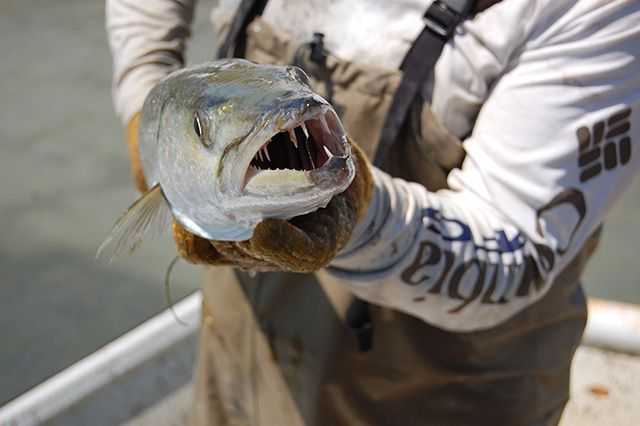
[dropcap]A[/dropcap]t its June meeting in Sarasota, the Florida Fish and Wildlife Conservation Commission (FWC) gave initial approval to several barracuda conservation measures after hearing concerns from various south Florida stakeholder groups about potential declines in barracuda populations.
These proposed changes will come back before the Commission at its September meeting in Weston for final approval. If approved at that time, changes will apply in state and federal waters off Collier, Monroe, Miami-Dade, Broward, Palm Beach and Martin counties only, where the majority of barracuda population concerns have been voiced, and will include:
- Creating a recreational and commercial slot limit of 15 to 36 inches,
- Creating a recreational daily bag limit of two fish per person, and
- Creating a commercial daily trip limit of 20 fish per person.
Because there are no species-specific regulations for barracuda, they are currently subject only to general statewide regulations, which include a default recreational bag limit of two fish or 100 pounds, whichever is greater. There are no commercial trip limits and no regulations in federal waters.
In recent years, stakeholders in southeast Florida and the Florida Keys who fish and dive have voiced concerns about seeing declines in barracuda numbers. FWC staff gathered additional public input at a series of workshops earlier this year.
The available barracuda data is limited and it would be difficult to gather enough additional data to evaluate the status of the population due to their complex life history and behaviors. Therefore, a full stock assessment has not been conducted on this species and the population size is not known. However, there has been a declining trend in the number of barracuda observed during underwater surveys conducted in the Keys during recent years, as well as a declining trend in the average size of those barracuda, which is consistent with concerns expressed by stakeholders.
A slot limit would contribute to barracuda conservation by eliminating harvest pressure on the youngest, more vulnerable fish, while also conserving the largest fish, which are the ones responsible for the vast majority of reproduction. Bag and trip limits would reduce overall harvest and leave more fish in the water to replenish the population and to be enjoyed by recreational divers and sport fishermen.
Staff will continue to monitor barracuda landings and catch-rate trends through data collected during Fish and Wildlife Research Institute underwater surveys and by asking anglers to report their catches using data-reporting programs like the Snook & Gamefish Foundation’s iAngler app.
For more information, visit MyFWC.com/Commission and select “Commission Meetings” then the “Agenda.”
PUBLISHER’S NOTE: Read November 2014 story regarding urge to protect barracuda here: Make Barracuda Top Priority.